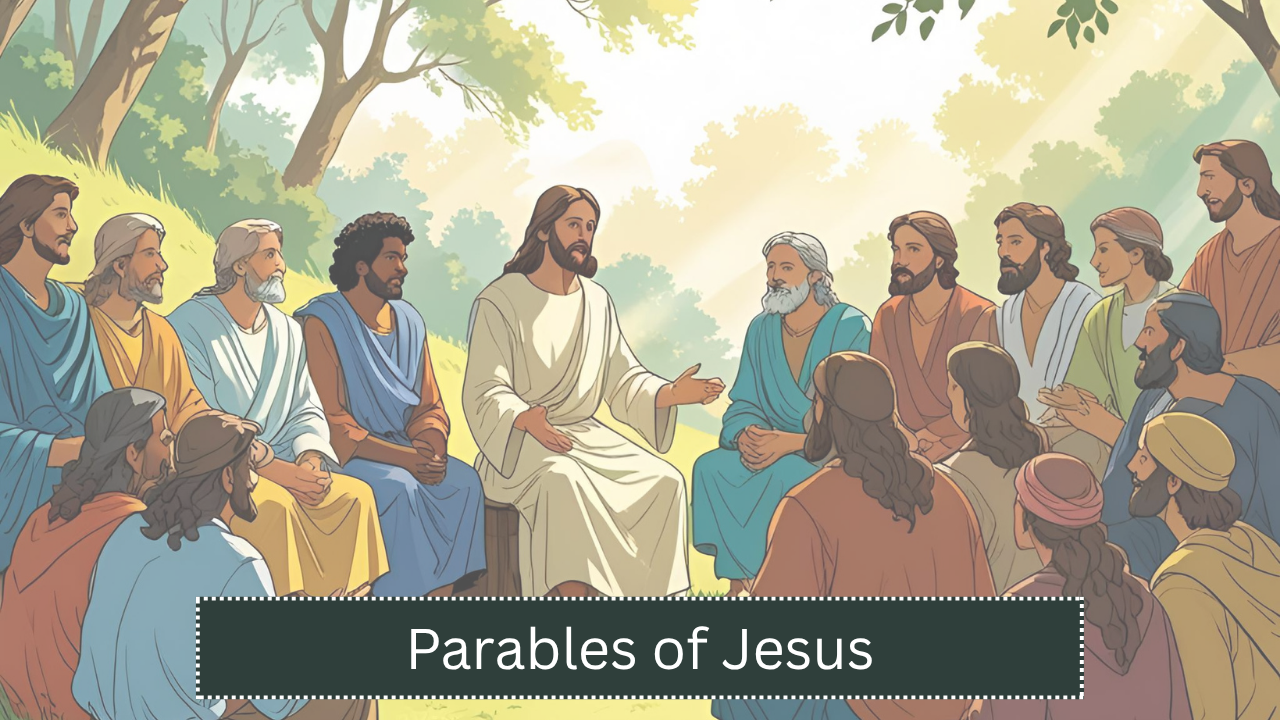The teachings of Jesus stand apart from all other philosophies and religious instruction because of their divine authority and unmatched depth. One of the most remarkable aspects of His teaching method was the use of parables. These stories, simple on the surface, carry profound spiritual truths that resonate across cultures and generations. The parables serve not only as moral lessons but as keys to understanding the mysteries of the Kingdom of God. Through the imagery of everyday life—seeds, sheep, coins, vineyards—Jesus conveyed eternal truths. These parables remain deeply relevant, offering believers a way to reflect, repent, and grow in faith.
Purpose of Parables
- Spiritual Revelation: Parables reveal truths to those whose hearts are open to God.
- Concealment for the Hardened: Parables hide truth from those resistant to God’s message, as seen in Matthew 13:13.
- Memorability: Parables use relatable stories to make divine truth easier to remember.
- Call to Reflection: They invite listeners to self-examine and spiritually discern.
- Illustration of the Kingdom: Parables show what the Kingdom of God is like—its value, growth, grace, and judgment.
Major Themes in the Parables
| Theme | Explanation |
|---|---|
| Grace and Forgiveness | God’s mercy shown in stories like the Prodigal Son and the Lost Sheep. |
| Justice and Judgment | Warnings about the consequences of disobedience in parables like the Ten Virgins. |
| Faith and Obedience | Teachings that link hearing God’s Word with doing, as in the Wise and Foolish Builders. |
| The Kingdom of God | Parables such as the Mustard Seed reveal the hidden yet powerful growth of the Kingdom. |
| Humility and Servanthood | Emphasized in stories like the Pharisee and the Tax Collector. |
Notable Parables and Their Deeper Truths
1. The Sower (Matthew 13:1–23)
- Storyline: A sower scatters seeds on four types of ground: path, rocky, thorny, and good soil.
- Spiritual Meaning:
- Path: Represents those who hear but do not understand—Satan steals the word.
- Rocky Ground: Represents shallow faith that withers in trials.
- Thorns: Symbolizes worldly distractions choking spiritual growth.
- Good Soil: Reflects a heart that hears, understands, and bears fruit.
2. The Prodigal Son (Luke 15:11–32)
- Storyline: A younger son demands his inheritance, wastes it, repents, and returns home to a forgiving father.
- Spiritual Meaning:
- Father: Symbol of God’s unfailing love and readiness to forgive.
- Younger Son: Represents sinners who repent.
- Older Son: Reflects the self-righteous who struggle with grace extended to others.
3. The Good Samaritan (Luke 10:25–37)
- Storyline: A man is robbed and left to die. A priest and Levite pass by, but a Samaritan helps him.
- Spiritual Meaning:
- Samaritan: Image of Christ-like compassion.
- Lesson: True neighborly love crosses boundaries and takes action.
4. The Ten Virgins (Matthew 25:1–13)
- Storyline: Ten virgins await a bridegroom; five are prepared with oil, five are not and miss the wedding.
- Spiritual Meaning:
- Oil: Represents spiritual preparedness and the Holy Spirit.
- Message: Watchfulness and readiness are essential for Christ’s return.
5. The Lost Sheep (Luke 15:1–7)
- Storyline: A shepherd leaves 99 sheep to find the one that is lost.
- Spiritual Meaning:
- Shepherd: Represents Christ’s personal love for each individual.
- Lesson: Heaven rejoices over one sinner who repents.
Symbolism in the Parables
| Symbol | Meaning |
|---|---|
| Seed | Word of God |
| Soil | Condition of human hearts |
| Lamp | God’s truth meant to be shared |
| Oil | Holy Spirit and spiritual preparedness |
| Master/King | Represents God or Christ in judgment and reward |
| Wedding Banquet | Kingdom of Heaven as a joyous invitation |
| Vineyard | God’s people, with workers representing prophets or believers |
| Net | Final judgment, where good and evil are separated |
Parables and the Hearer’s Heart
- Invitation to Examine: Each parable subtly questions the listener—“Which soil am I?”, “Am I ready?”, “Do I love my neighbor?”
- Call to Transformation: The aim is not merely to teach, but to lead to inner change.
- Reflection of God’s Heart: Parables consistently portray a God who is loving, just, patient, and generous.
Jesus’ Use of Cultural Context
- Agricultural Imagery: Familiar to listeners in a rural economy—used in parables like the Sower and the Mustard Seed.
- Social Customs: Wedding feasts, inheritance laws, servant-master relationships all make parables contextually rich.
- Economic Analogies: Coins, talents, debts—used to communicate the value of forgiveness, stewardship, and faithfulness.
Impact of Parables on Modern Believers
| Aspect | Relevance Today |
|---|---|
| Moral Clarity | Provides ethical guidance in a confused world. |
| Spiritual Awareness | Encourages deeper engagement with faith and personal accountability. |
| Cultural Bridge | Makes the Bible accessible to diverse audiences through simple yet powerful stories. |
| Discipleship Tool | Helps teach doctrine through narrative, appealing to memory and imagination. |
Common Misinterpretations to Avoid
- Over-Allegorizing: Not every element in a parable has symbolic meaning.
- Cultural Ignorance: Ignoring 1st-century Jewish customs may lead to misunderstanding.
- Moralizing: Reducing parables to mere good-behavior lessons misses the Kingdom message.
- Universal Application: Some parables are aimed at Israel specifically or the early church context.
Why Jesus Chose Parables
- Fulfillment of Prophecy: As noted in Matthew 13:35, Jesus spoke in parables to fulfill what was spoken by the prophet.
- Accessibility: Parables allow spiritual seekers to grasp complex truths simply.
- Challenge to Thinkers: Rather than spoon-feed truth, parables force the listener to wrestle with meaning.
- Invitation to Relationship: Understanding comes not only from intellect but from a heart in tune with God.
Final Analysis
The parables of Jesus remain timeless vessels of divine wisdom. These short, earthly stories are windows into heavenly truths. Each parable speaks to the heart of human experience—loss and restoration, pride and humility, justice and grace. A believer who studies these stories with reverence and reflection uncovers not only moral guidance but the very heart of God. Understanding parables leads to transformed living, greater faith, and deeper intimacy with Christ.

